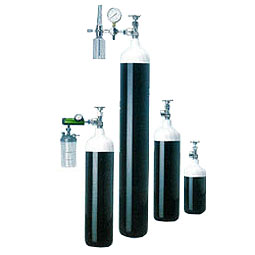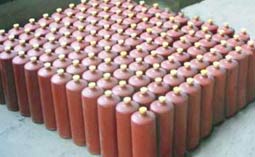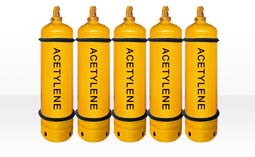PNG Oxygen Limited
Head Office: Lae
Telephone: + 675 472 6788 / 472 6708
Facsimile: + 675 472 6797
Laurabada Avenue, Lae
PO Box 873 Lae
Papua New Guinea.
email: pngoxygen@yahoo.com
Port Moresby Agent:
Telephone: + 675 335 9633
Fax: + 675 325 9483



|
Manufacturer & Supplier of
Oxygen & Acetylene Gases
About Oxygen for Industrial use:
Oxygen is supplied as a compressed gas and has numerous uses in steelmaking and other metals refining and fabrication processes, in chemicals, pharmaceuticals, petroleum processing, glass and ceramic manufacture.
Hazards
- Oxidiser
- Considerably accelerates and sustains combustion may react strongly with other combustible materials.
Precautions
- do not use with oil or grease.
- only use equipment approved for oxygen use.
- keep away from all sources of ignition.
- store away from flammable gases and other flammable products.
About Acetylene Industrial use:
Acetylene is supplied dissolved under pressure in acetone; a colourless, flammable, explosive gas, it is used as a fuel in welding and cutting metals. When Acetylene is burned with pure oxygen, it produces very high temperatures. Oxyacetylene torches burn mixtures of acetylene gas and oxygen which produces a flame hot enough to cur or weld steel.
Hazards
- Extremely flammable, may form an explosive mixture with air unstable and decomposes violently under the effect of heat or pressure.Forms explosive acetylides in combination with copper, silver or mercury.
Precautions
- Acetylene use pressure must not exceed 150kpa
- Install flash back arrestors on all cutting equipment
- Store in a well-ventilated area, away from oxygen-carrying materials
Safety with cylinders:
When using fuel and oxygen tanks they should be fastened securely upright to a wall or a post or a portable cart.
An oxygen tank is especially dangerous for the reason that the oxygen is at a pressure of 21 MPa (3000 lbf/in² = 200 atmospheres) when full, and if the tank falls over and its valve strikes something and is knocked off, the tank will effectively become an extremely deadly flying missile propelled by the compressed oxygen, capable of even breaking through a brick wall.
For this reason, never move an oxygen tank around without its valve cap screwed in place.
On an oxyacetylene torch system there will be three types of valves, the tank valve, the regulator valve, and the torch valve.
There will be a set of these three valves for each gas.
The gas in the tanks or cylinders is at high pressure.
Oxygen cylinders are generally filled to approximately 2200 psi.
The regulator converts the high pressure gas to a low pressure stream suitable for welding. Never attempt to directly use high-pressure gas.
|



